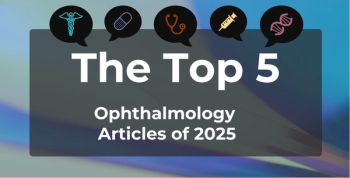
Analysis Finds Aggressive Social Distancing Measures Economically Justified
As some states move to eschew social distancing recommendations by beginning plans to reopen businesses amid the coronavirus disease 2019 pandemic, a group of economists highlight in a recent study that the potential benefits of social distancing in saving lives far outweigh the projected damage to the economy.
As some states move to eschew social distancing recommendations by beginning plans to reopen businesses amid the coronavirus disease 2019 (COVID-19) pandemic, a group of economists highlight in a recent study that the potential benefits of social distancing in saving lives far outweigh the projected damage to the economy.
In the vast majority of states, the COVID-19 pandemic has led to unprecedented “stay-at-home” orders and the forced closure of all nonessential businesses. The growing
However, as indicated in the IBI study, the ultimate financial burden depends on the eventual severity of the virus. In other words, if more people become infected and are then unable to work in any capacity, this could have dire financial repercussions for
Published in the Journal of Benefit Cost Analysis,1 researchers estimated that the current social distancing measures across the country will reduce the average contact rate among individuals by 38%, which would then reduce the peak of the infection curve by more than half. Using epidemiological and economic forecasting to perform a rapid benefit-cost analysis, study authors indicated net benefits of about $5.2 trillion based on these social distancing measures.
“Social distancing saves lives but comes at large costs to society due to reduced economic activity. Still, based on our benchmark assumptions, the economic benefits of lives saved substantially outweigh the value of the projected losses to the US economy,” said lead study author Linda Thunstrom, PhD, assistant professor in the Department of Economics in the UW College of Business.
Noting a study limitation, economists said that their analysis does not consider the impact of a second wave of COVID-19 infections, as they assume that current social distancing policies will lead to the implementation of cost-effective COVID-19 treatments or vaccines.
So when will it be time to ease social distancing?
This is the current dilemma many state governments are facing when deciding how to approach the next 2 months of the pandemic. States such as Georgia have already
Initial research touted by the Trump administration points to the pandemic potentially subsiding this summer, but in a study published in Science,2 researchers at Harvard T.H. Chan School of Public Health signal that the United States may have to endure social distancing measures until 2022 barring a vaccine, better therapeutics, or an increase in critical care capacity. Utilizing estimates of seasonality, immunity, and cross-immunity for 2 betacoronaviruses (OC43 and HKU1) from US time series data, researchers projected that future outbreaks of COVID-19 will occur in the winter after this initial, most-severe wave.
The study authors note that while this may seem unreasonable for the economy, their goal is to not endorse social distancing, but to “identify likely trajectories of the epidemic under alternative approaches, identify complementary interventions such as expanding ICU capacity and identifying treatments to reduce ICU demand, and to spur innovative ideas to expand the list of options to bring the pandemic under long-term control.”
As Americans indicated in a poll to be
“Our analysis suggests that the aggressive social distancing policies currently promoted in the U.S. probably are justified, given that no good contingency plans were in place for an epidemic of this magnitude,” said thestudy authors from the UW College of Business. “But the costs and consequences will be painful. To avoid these in the future, there are likely large social benefits to ensuring that we are better prepared for the next pandemic.”
References
1. Thunstrom L, Newbold S, Finnoff D, et al. The benefits and costs of using social distancing to flatten the curve for COVID-19 [published online March 27, 2020]. J Benefit Cost Anal. doi: 10.2139/ssrn.3561934.
2. Kissler SM, Tedijanto C, Goldstein E, et al. Projecting the transmission dynamics of SARS-CoV-2 through the postpandemic period [published online April 14, 2020]. Science. doi: 10.1126/science.abb5793.
Newsletter
Stay ahead of policy, cost, and value—subscribe to AJMC for expert insights at the intersection of clinical care and health economics.







































